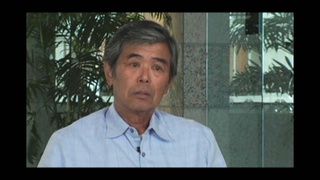Interviews
Bonsai and oil painting
I*: The next question. You had trained in oil painting as a young man in Japan. How do you feel that this painting has contributed to your work in bonsai.
Well, everything… Well, the color, shape, forms, you know, everything. Everything is in oil painting and it’s the same thing in a bonsai, too. So, I always think about when I make a bonsai, I pretend like I’m doing an oil painting. So, well, it’s a very necessary thing to know about oil painting. And so, well, bonsai is same as oil painting. I feel that bonsai is a just a different medium. See, oil painting, I used the oil paint. But, bonsai is I’m using a living tree [re]placing the oil paint. So, well, the oil painting is almost, to me it’s the same as the sketch for the bonsai. So, if I want to make a bonsai, well, the oil painting is sort of my—what d’you call it—sample.
* “I“ indicates an interviewer (Daniel Lee).
Date: February 4, 2004
Location: California, US
Interviewer: Daniel Lee
Contributed by: Watase Media Arts Center, Japanese American National Museum


